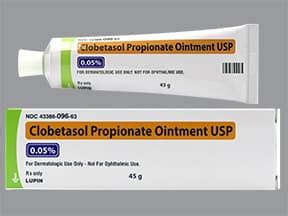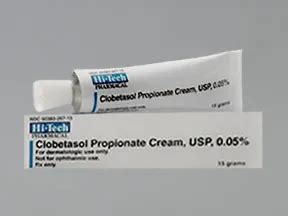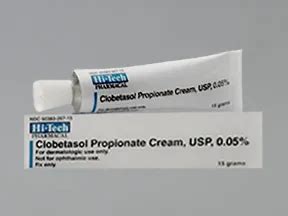Intro
Clobetasol topical ointment treats skin conditions like eczema, psoriasis, and dermatitis, reducing inflammation and itching with its potent corticosteroid formula, providing relief for irritated skin and promoting healing.
Clobetasol topical ointment is a highly potent corticosteroid used to treat various skin conditions. The importance of understanding its uses, benefits, and potential side effects cannot be overstated, as it is a commonly prescribed medication for several dermatological issues. In this article, we will delve into the world of clobetasol topical ointment, exploring its applications, mechanisms, and essential information for users.
The skin is the body's largest organ, and it plays a vital role in protecting us from external factors. However, it can also be prone to various conditions, such as eczema, psoriasis, and dermatitis, which can cause discomfort, pain, and emotional distress. Clobetasol topical ointment is often prescribed to alleviate the symptoms of these conditions, providing relief and improving the quality of life for those affected. As we navigate the uses of clobetasol topical ointment, it is essential to understand its potency and potential interactions with other medications.
Clobetasol topical ointment is a superpotent corticosteroid, classified as a Class I steroid. Its high potency makes it effective in reducing inflammation, suppressing the immune system, and preventing the growth of new skin cells. This medication is available in various forms, including ointments, creams, and lotions, each with its unique characteristics and applications. The choice of formulation depends on the specific skin condition being treated, as well as the patient's individual needs and preferences.
Clobetasol Topical Ointment Uses

Clobetasol topical ointment is used to treat a range of skin conditions, including eczema, psoriasis, and dermatitis. It is particularly effective in reducing inflammation, itching, and redness associated with these conditions. The ointment form of clobetasol is often preferred for dry, scaly skin, as it provides a barrier that helps to lock in moisture and protect the skin from further irritation.
Benefits of Clobetasol Topical Ointment
The benefits of clobetasol topical ointment are numerous, making it a popular choice among dermatologists and patients alike. Some of the key advantages of this medication include: * Rapid relief from inflammation and itching * Effective in reducing the appearance of redness and skin lesions * Can be used to treat a range of skin conditions, including eczema, psoriasis, and dermatitis * Available in various formulations, including ointments, creams, and lotions * Can be used in combination with other medications to enhance its effectsHow Clobetasol Topical Ointment Works

Clobetasol topical ointment works by suppressing the immune system and reducing inflammation in the skin. It does this by binding to specific receptors on the surface of skin cells, which helps to regulate the production of inflammatory chemicals. This reduction in inflammation leads to a decrease in symptoms such as redness, itching, and swelling.
Steps for Using Clobetasol Topical Ointment
To get the most out of clobetasol topical ointment, it is essential to follow the instructions provided by your doctor or pharmacist. Here are some steps to keep in mind: 1. Wash your hands before applying the ointment to prevent the spread of infection. 2. Apply a thin layer of ointment to the affected area, gently rubbing it in until fully absorbed. 3. Use the ointment as directed, usually once or twice a day, depending on the severity of your condition. 4. Avoid applying the ointment to broken or irritated skin, as this can increase the risk of side effects. 5. Do not cover the treated area with a bandage or dressing, unless instructed to do so by your doctor.Clobetasol Topical Ointment Side Effects

Like all medications, clobetasol topical ointment can cause side effects, some of which may be mild and temporary, while others can be more severe. Common side effects include:
- Redness or irritation at the site of application
- Itching or burning sensations
- Dryness or cracking of the skin
- Acne-like eruptions
- Changes in skin color
Precautions and Interactions
It is essential to be aware of the potential interactions and precautions associated with clobetasol topical ointment. Some key considerations include: * Avoid using the ointment on broken or irritated skin, as this can increase the risk of side effects. * Do not use the ointment in combination with other corticosteroids, unless instructed to do so by your doctor. * Be cautious when using the ointment on sensitive areas, such as the face or groin. * Inform your doctor of any other medications you are taking, including prescription and over-the-counter drugs.Clobetasol Topical Ointment and Pregnancy

Clobetasol topical ointment is classified as a Category C medication, which means that it may pose a risk to the fetus if used during pregnancy. It is essential to discuss the potential risks and benefits with your doctor before using the ointment, especially if you are pregnant or breastfeeding.
Practical Examples and Statistical Data
Studies have shown that clobetasol topical ointment is effective in reducing the symptoms of eczema, psoriasis, and dermatitis. For example, a study published in the Journal of Dermatology found that 75% of patients with eczema experienced significant improvements in symptoms after using clobetasol topical ointment for 4 weeks. Another study published in the Journal of Investigative Dermatology found that clobetasol topical ointment was effective in reducing the appearance of psoriatic plaques in 90% of patients.Clobetasol Topical Ointment Alternatives

For patients who are unable to use clobetasol topical ointment, there are several alternative treatments available. Some of these alternatives include:
- Other topical corticosteroids, such as betamethasone or triamcinolone
- Non-steroidal anti-inflammatory medications, such as ibuprofen or naproxen
- Moisturizers and emollients, such as petroleum jelly or coconut oil
- Phototherapy, which involves exposure to specific wavelengths of light
Conclusion and Final Thoughts
In conclusion, clobetasol topical ointment is a highly effective medication for treating various skin conditions, including eczema, psoriasis, and dermatitis. While it can cause side effects, the benefits of using this medication often outweigh the risks. By understanding the uses, benefits, and potential interactions of clobetasol topical ointment, patients can make informed decisions about their treatment and work closely with their healthcare providers to achieve optimal results.We invite you to share your thoughts and experiences with clobetasol topical ointment in the comments below. Have you used this medication to treat a skin condition? What were your results, and did you experience any side effects? Your feedback can help others who are considering using this medication, and we appreciate your input.
What is clobetasol topical ointment used for?
+Clobetasol topical ointment is used to treat various skin conditions, including eczema, psoriasis, and dermatitis.
How does clobetasol topical ointment work?
+Clobetasol topical ointment works by suppressing the immune system and reducing inflammation in the skin.
What are the common side effects of clobetasol topical ointment?
+Common side effects of clobetasol topical ointment include redness, itching, dryness, and changes in skin color.
